- California Assembly OKs highest minimum wage in nation
- S. Korea unveils first graphic cigarette warnings
- US joins with South Korea, Japan in bid to deter North Korea
- LPGA golfer Chun In-gee finally back in action
- S. Korea won’t be top seed in final World Cup qualification round
- US men’s soccer misses 2nd straight Olympics
- US back on track in qualifying with 4-0 win over Guatemala
- High-intensity workout injuries spawn cottage industry
- CDC expands range of Zika mosquitoes into parts of Northeast
- Who knew? ‘The Walking Dead’ is helping families connect
Hanbok latest ‘it’ item for fashion-savvy
SEOUL (Yonhap) — Into a dusky street in the bustling university district of Shinchon swept a crowd of Korean ghosts — black-clad messengers of the underworld, sobbing girls in white mourning dresses who died before marriage, and baby spirits.
The Korean Ghost Night on Saturday evening last week brought together a hundred university students and other young people wishing to enjoy the West’s Halloween fun in their own fashion by dressing up in the traditional garment hanbok.
Bell-shaped wrap-around skirts and matching short jackets fastened with wide ribbons at the bosom, the typical hanbok ensemble, were donned by the female ghosts with disheveled hair and blood dripping from their mouths.
Hide-and-seek games at a neighborhood park and a drinking session wrapped up the party designed to strip out bias against Korean ghosts as well as the traditional garment, which had long been driven out of ordinary Korean wardrobes through the country’s history of whirlwind modernization.
With the sweeping introduction of shapely Western-style dresses and more easily washable fabric, the role of the bulky hanbok dress, as we know of it now, has been limited to ceremonial purposes like weddings, funerals or traditional holiday celebrations.
The long-estranged traditional dress is again taking center stage, however, as hanbok designers’ attempts to go beyond the limits match up to the young generation’s longing for distinction.
Kwon Miru is one of the growing herd of young women sporting the traditional costume.
Kwon’s photos taken in various hanbok during overseas trips to Italy, Spain and Mongolia went viral on social networking services. This resulted in the still-ongoing fad of wearing the traditional garment while on trips abroad, then posting the photos of the trips online, especially among female university students.
“It was the moment of awakening when I found that I do not need to wear the vivid red skirt,” the 35-year-old freelance lecturer said as she recalled the moment she fell in love with hanbok in 2013.
The ensemble of a vibrant red satin skirt with a bright yellow jacket has been one of the typical choices for unmarried women, making hanbok an awkward outfit for the everyday environment.
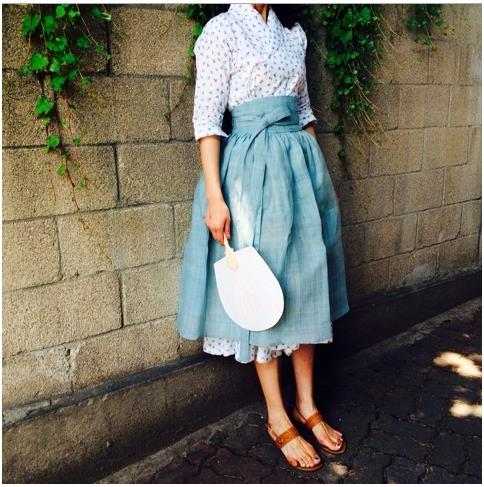
Hanbok designer Kim Young-jin’s signature “waist skirt” wrapped over her female “choellik” dress produced under her brand “tchaikim” (photo courtesy of tchaikim)
With more choices of easier-to-wear colors like navy, lavender or gray, her collection of hanbok has swelled to dozens.
“Hanbok used to be what I had to wear for ceremonies, but now it is what I want to wear. It is whetting my desire,” said Kwon who heads Hanbok Noridan, or the Hanbok Play Group, which arranged the Korean ghost-outing.
Behind Kwon’s deepening interest are hanbok designers like Kim Young-jin whose latest adaptation of the traditional official male robe into a dress for women contributed to the huge amount of attention hanbok is garnering.
Kim’s “cheollik” dress and “waist” skirt are at the forefront of the vogue, with her fresh deconstructive design attempts pushing the envelope of the folk costume.
Cheollik, a skirted men’s outer robe worn by government officials or noblemen going on a field trip, was adapted into a women’s one-piece dress, a totally new format for the traditional female costume characterized by the skirt-jacket ensemble.
The new format allows a tighter-fitting silhouette in the torso and a full-skirted bottom, providing the glamour of modern clothing.
Kim’s gathered skirt, designed to wear over the cheollik dress, is also a new attempt, given that the traditional dress does not allow the waist band to be shown from under the jacket.
“They made hanbok much more accessible. Any blouse can go with the waist skirt that works as a pleated skirt which is currently fashionable,” Kwon said.
A pair of Crocs or sneakers is one of the most favored mix-and-match choices to give the final touch to the trendy style among young hanbok lovers. Now many designers are offering different hanbok styles in untraditional fabrics like denim, tweed, sheer, lace or cotton patterned with SpongeBob.
With the growing popularity of hanbok-styled clothes, sales of hanbok adapted for everyday use jumped 244 percent during the two-week period from Sept. 10 – right before the national Chuseok holiday – among women in their 20s compared to last year, according to online retail giant Gmarket.
Hanbok as an everyday garment is nothing entirely unfamiliar.
Characterized by natural dyeing, often in a clay color, and loose-fitting, so-called modernized hanbok have been favored by a small but steady group of consumers for decades, many of them Korean or Chinese character teachers or social activists with nationalist agendas.
Both tastes have something in common: Critical challenges to what reviewers slam as a deviation from traditional heritage.
“The spectrum of perceiving hanbok is too narrow, the shape of the traditional garment has been constantly changing for many centuries,” designer Kim said, stressing that modifications to hanbok should be accepted as part of ever-changing fashion.
“Fashion evolves with imagination and changing needs. If changes are ruled out as non-traditional, we can never make hanbok our own,” she highlighted.








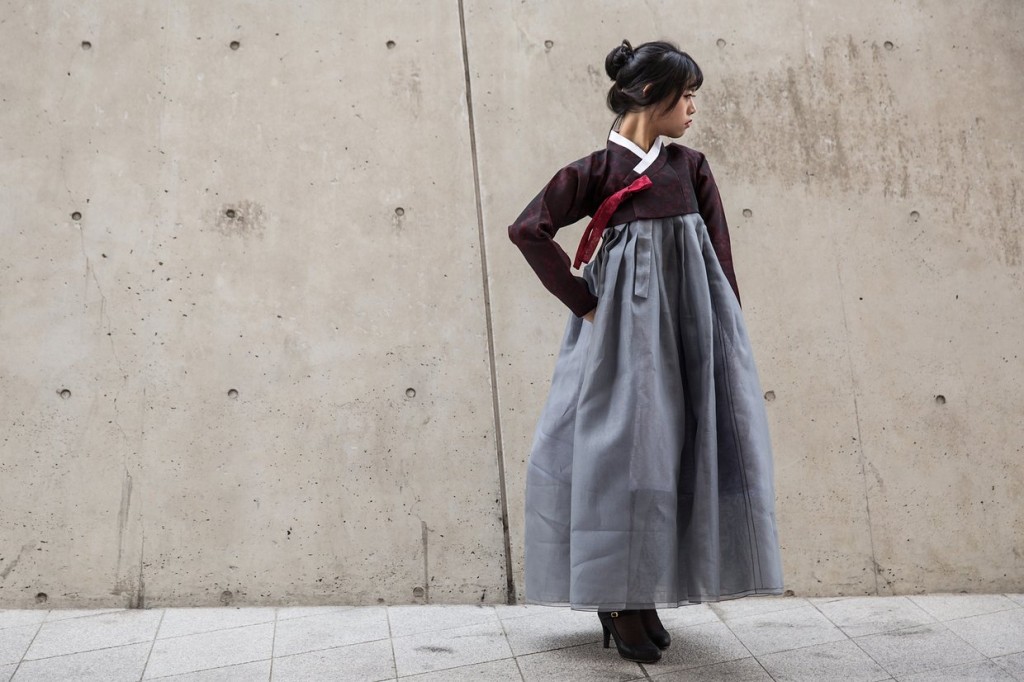
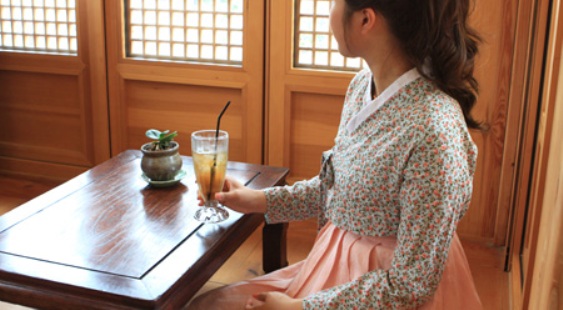
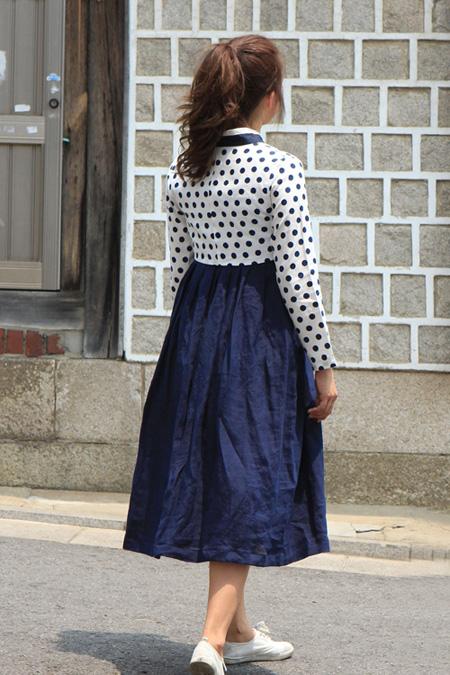
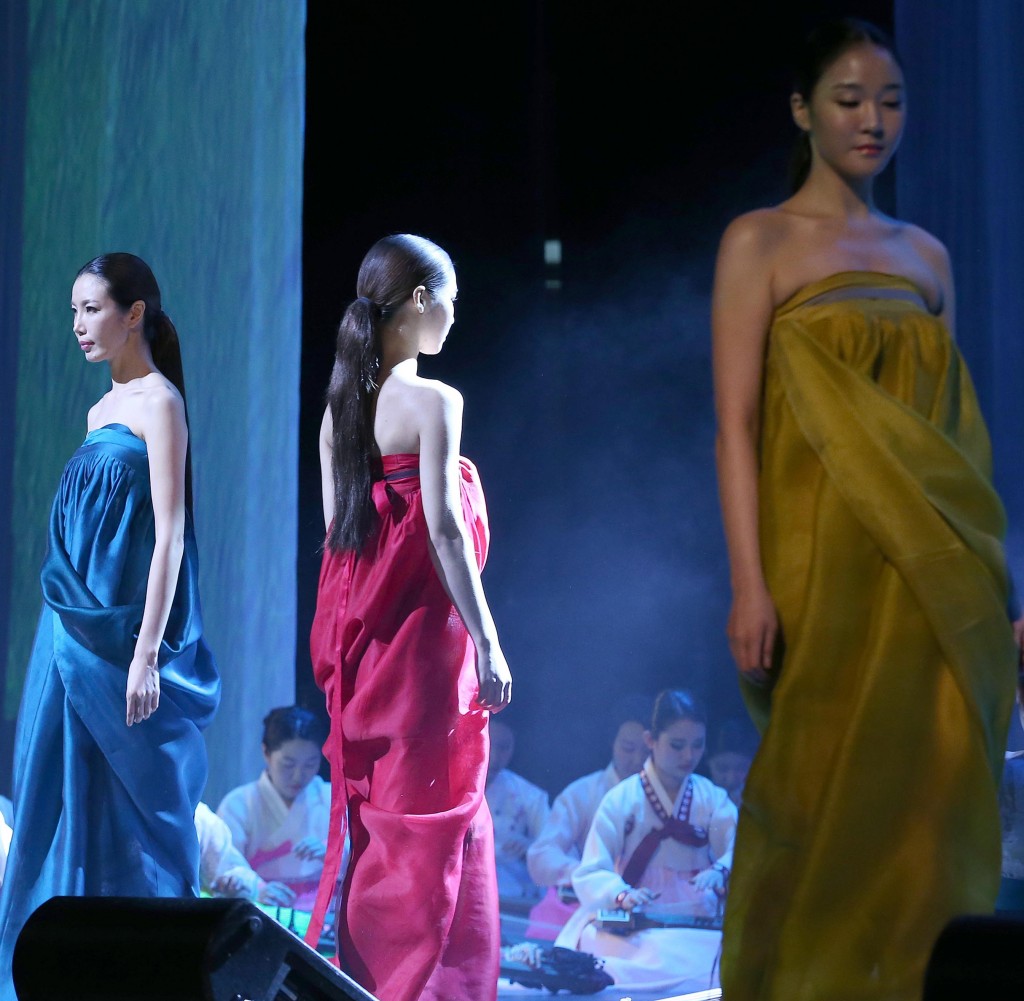





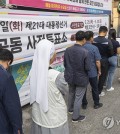
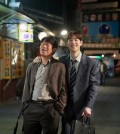
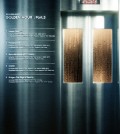

Pingback: Hannah Davis Models the Latest High-Fashion Looks from The Hunger Games
Pingback: Latest Photos Of Hair Styles News | Fashion Buddies
Sothuon Tes
February 21, 2016 at 8:57 AM
I love Hanbok, very traditional and so popular this days.